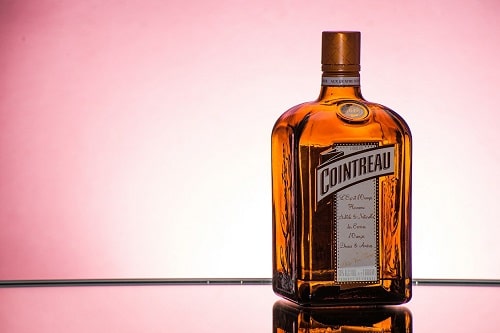What is Campari? Campari is a bitter Italian Liqueur and is considered an Aperitif. It’s dark red in color and the alcoholic volume is anywhere between 25.5 and 28%.
Have you ever saw Campari as a cocktail ingredient and thought: what is Campari? Yeah. Me too.
Until I read up on it a little. It’s really quite an interesting Aperitif.
Want to know a little more? Let’s take a deeper look.
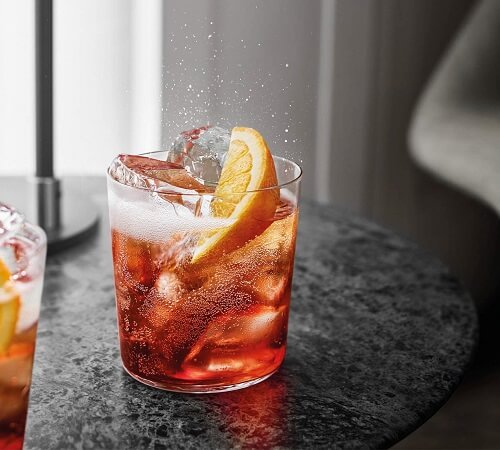
The History of Campari
Campari was invented in 1860 by Gaspare Campari in Novara, Italy.
Gaspare was born into a farming family in 1828, but he didn’t follow the family trade. By the age of 14, he was working as a waiter at a local bar called The Bass Bar, in his hometown of Cassolnovo.
According to Jonathan Ray, writing in the Telegraph, it was here he apparently became “obsessed by people’s drinking habits”.
This obsession eventually led him to open his own bar, which became so successful he opened a second in the heart of Milan.
In Milan, his bar became “the most fashionable in town, favoured by the Milanese intelligentsia.”
Here, he began making his own bitters, cordials and cream liqueurs in the basement and in 1840 led him to start selling his own bitters.
Although at first, he named his drink Bitter all’Uso d’Holanda, this is widely recognised as the birth of the Campari bitter aperitif.
However, it wasn’t until around 1860 that he refined his formula to what we now know (and love).
Gaspare died in 1882 at the age of 54 and his business empire then passed down to his sons, Davide and Guido, who went about expanding their father’s empire.
In 1904 they opened a production plant located at Sesto San Giovanni, just outside of Milan that would allow them to mass-produce the bitter and also help them export it. They started with Nice and the popularity of the liqueur grew.
Today, it’s exported to over 190 countries worldwide.
Quite an interesting history there, right?
Now, let’s take a look at what Campari’s actually made from.
What is Campari Made from?
Campari is made from a combination of:
- Bitter and aromatic herbs.
- Plants.
- Fruit in Alcohol.
- Water.
Yes, I realise that’s not an incredibly specific list of ingredients, but there’s a reason for that.
What the Italian Aperitif is specifically made from, is a well-kept secret. Eligio Bossetti, a local Italian historian, interviewed in 2009 in the Daily Telegraph states, “Today only three people know the secret formula and so secret is it that nobody even knows who those three people are.”
Now that’s a secret recipe – KFC eat your heart out.
Interestingly, what is actually known about the ingredients is precisely how the Italian Aperitif gets its interesting royal red tint.
In 2007, an article featured on the ChowHound website suggested that some point in 2006, the ingredients had been changed to now read “Artificially Colored” instead of “Carmine Dye”.
And you’ll be thankful it has been replaced too because Carmine Dye is actually made from crushed cochineal insects – yes that’s right insects.
Yuk.
What does Campari Taste Like?
Campari is an incredibly unique drink; it’s both sweet and bitter at first taste, then hits you with a rich herby, orangey (and rather tasty) flavour.
For some, the bitter flavour takes time to get used to, but it’s also why it makes a fantastic addition to cocktails.
How do you Drink Campari?
Campari is widely considered to be an Apéritif, a drink to be served before dinner to help stimulate the appetite.
It’s a common addition to a number of both classic and modern cocktails and is also often drank with Soda Water.
What Cocktails can you Make with Campari?
As previously mentioned, Campari is a fantastic ingredient to Cocktails as its bitter flavour often adds a new dimension to a drink.
Let’s take a look at some of the more popular cocktails with Campari.
Perfect Your Cocktail Experience
If you’re going to make classic cocktails, you might as well do it right, right? Here’s some of the stuff that you can use to make your Campari Cocktail experience perfect.
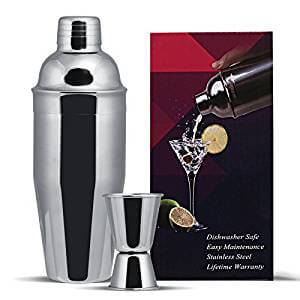
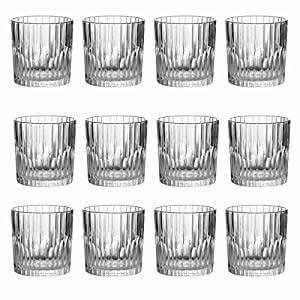
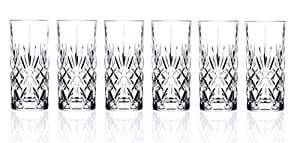
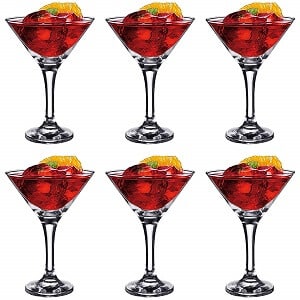
Now let’s get to the cocktails…
Negroni
The Negroni is a classic cocktail that we’ve previously mentioned in our 14 Quick & easy Cocktails with Gin article and is thought to have been first mixed in 1919, in Florence, Italy.
Ingredients
- 30ml / 1oz Gin
- 30ml / 1oz Sweet Red Vermouth
- 30ml / 1oz Campari
Recipe
- Add Ice, Gin, Vermouth and Campari to an Old Fashioned Glass.
- Stir well.
- Add a slice of Orange for garnish.
Americano
The Americano is pretty much just like a Negroni, but replaces with Gin with Soda Water for a more refreshing (and less boozy) drink.
Ingredients
- 30ml / 1oz Sweet Red Vermouth.
- 30ml / 1oz Campari.
- A Splash of Soda Water.
Recipe
- Add Ice to a Highball Glass.
- Pour in Vermouth and Campari.
- Add a splash of Soda Water to taste.
- Add a slice of orange to garnish.
Spritz
The Spritz is another classic cocktail that utilises the fruity and bitter flavour of Campari. Originating at some point in the latter 1800s, the Spritz uses Prosecco as its primary alcoholic base with the usual Soda Water mixed to compliment the Italian Aperitif.
Ingredients
- 60ml / 2oz Proseco.
- 30ml / 1oz Campari.
- Splash of Soda Water.
Recipe
- Add Ice to an Old Fashioned Glass.
- Pour in Prosecco and Campari.
- Add a splash of Soda Water.
- Use a Slice of Orange to Garnish.
Dracula’s Bite
The Dracula’s Bite cocktail is more of a modern Cocktail with Campari and features in our 37 Cocktails with Orange Juice article (which is well worth checking out).
Ingredients
- 23ml / .75oz Gin
- 23ml / .75oz Campari
- 23ml / .75oz Orange Juice
- 2 dashes Blackcurrant Liqueur
Recipe
With Cocktail Shaker:
- Add Ice, Gin, Campari, and Orange Juice into your Cocktail Shaker.
- Shake well.
- Pour into a Cocktail Glass.
- Add 2 dashes of Blackcurrant Liqueur.
Without:
- Add Ice, Gin, Campari, and Orange Juice into a Cocktail Glass.
- Stir well.
- Add 2 dashes of Blackcurrant Liqueur.
Summary
So, what is Campari?
- An Aperitif.
- A bitter-tasting Italian Liqueur that’s most commonly used as a mixer.
- Has an alcoholic content of between 25.5% and 28%.
- Has a secret recipe that only 3 people in the world know.
- Nobody knows who those 3 people are.
- Tastes bitter and fruity at the same time.
- Drinks are usually garnished with Orange.
- Up until 2006 used to be coloured by crushed up insects.
Further Reading
- 14 Easy Cocktails with Gin
- 37 Delicious Cocktails with Orange Juice
- https://en.wikipedia.org/wiki/Campari
- https://en.wikipedia.org/wiki/Gaspare_Campari
- https://www.telegraph.co.uk/foodanddrink/wine/6605241/Campari-the-Italian-classic-that-still-has-style.html
- https://abarabove.com/campari/
- https://www.chowhound.com/post/campari-carmine-artificial-color-407351?page=2




